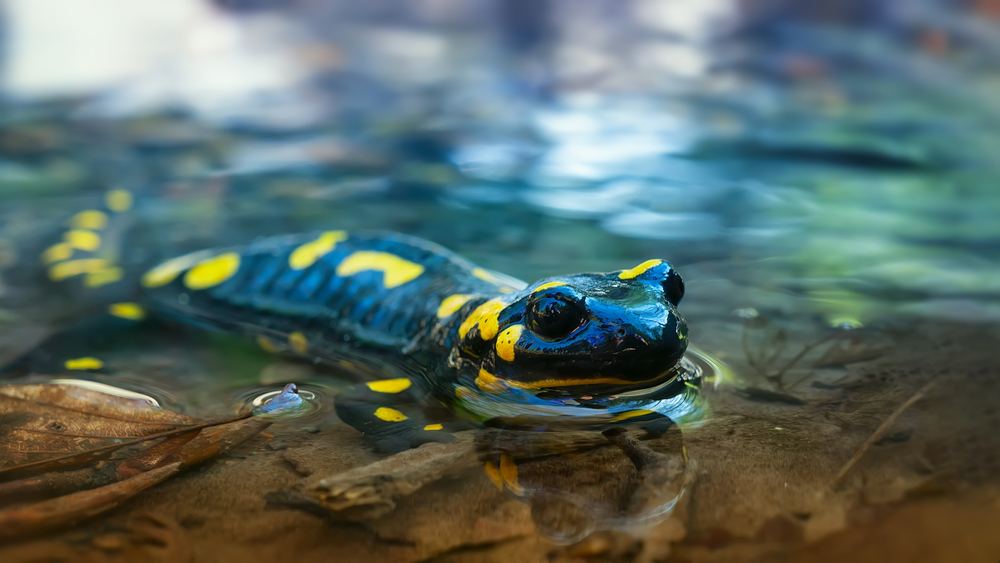
We often think of frogs as cute animals that make strange noises. But they’re more complex than meets the eye. These amphibians, along with their ancestors, hold an important key to how life on Earth developed. We’re constantly writing this elaborate history from old and new discoveries. Surprisingly, we see some of the history of amphibians mirrored in Genesis.
Walking Fish That Breathe Air
Amphibians were among the first species to move from water to land. National Geographic describes how this transition took place. You can thank ancient lobefin fishes, named for the thick fleshly areas at the bases of their fins. They’re sarcopterygians, a group that also includes modern lobefin and lungfish species.
The cool thing about a lungfish is that it can literally breathe air. It just pops up to the water’s surface, takes a breath, then goes back down. Some lungfish species possess incredibly intricate respiratory systems. When water becomes more shallow and its oxygen content drops, these fish can still readily survive.
Tiktaalik: An Ancient Amphibian Ancestor
One ancient lobefin, Tiktaalik, offers an important look into our distant past. Scientists discovered a fossil of this strange fish in 2004. While it had fins and scales, it also possessed a triangular head plus unusual fins that could prop the body up. It could not do a lot of walking on land, but those fins may have allowed it to briefly venture onto the shores of the shallow waters it inhabited.
Scientists estimate that Tiktaalik lived around 375 million years ago, during the late Devonian Period. This fascinating creature is a tetrapodomorph, a fancy term for transitional animals between fish and four-legged vertebrates. Tetrapodomorphs are also ancestors of modern tetrapods, a broad group that encompasses everything from housecats and parakeets to Komodo dragons and ostriches. It also includes amphibians: frogs, toads, salamanders, and newts.
Amphibians are important in evolutionary terms. They come from a common sarcopterygian ancestor, one that also gave rise to Tiktaalik and modern lungfish, plus reptiles, birds, and mammals—including modern humans. Our world would look very different if those tetrapodomorphs had never ventured onto land.
Wild Beasts and Creeping Things
Genesis 1:24-25 mentions the creation of land animals. It specifically names cattle plus “wild beasts” and “creeping things.” Three Hebrew words are key in this passage. “Behemah” typically refers to livestock. “Chaya” is translated as “wild beast,” and “rémes” is rendered as “creeping things.”
Whoever wrote Genesis saw the world differently than many of us do today. Since this text is part of the Hebrew Torah, it contributes to Jewish religious thought. Rabbi Reuven Chaim Klein breaks it down this way: Behemot are domesticated animals, while chayot typically connote mammals that live in the wild. Rémes refers to everything else that lives on land, like insects, reptiles, and rodents. Judging from the language in Genesis, amphibians and their immediate ancestors could either be wild beasts or creeping things.
Biologists don’t make these kinds of distinctions, of course. But you’ll note that the three types of animals mentioned in verses 24 and 25 are created after oceans, marine life, and land plants appear. That’s the same sequence documented by scientists, using valuable information from rocks, fossils, and other critical discoveries.
An Interconnected Web of Life
Though they didn’t have our modern scientific knowledge, the writers of Genesis must have possessed a certain logic. With some exceptions, the order of creation events in the first chapter of Genesis follows how our scientists say that our planet and its life (including amphibians) evolved. Without oceans, there would be no marine life or plants—and perhaps no chance for human beings to even exist. Such complexities reveal both the incredible sophistication of our natural world and how our ancestors perceived it.

